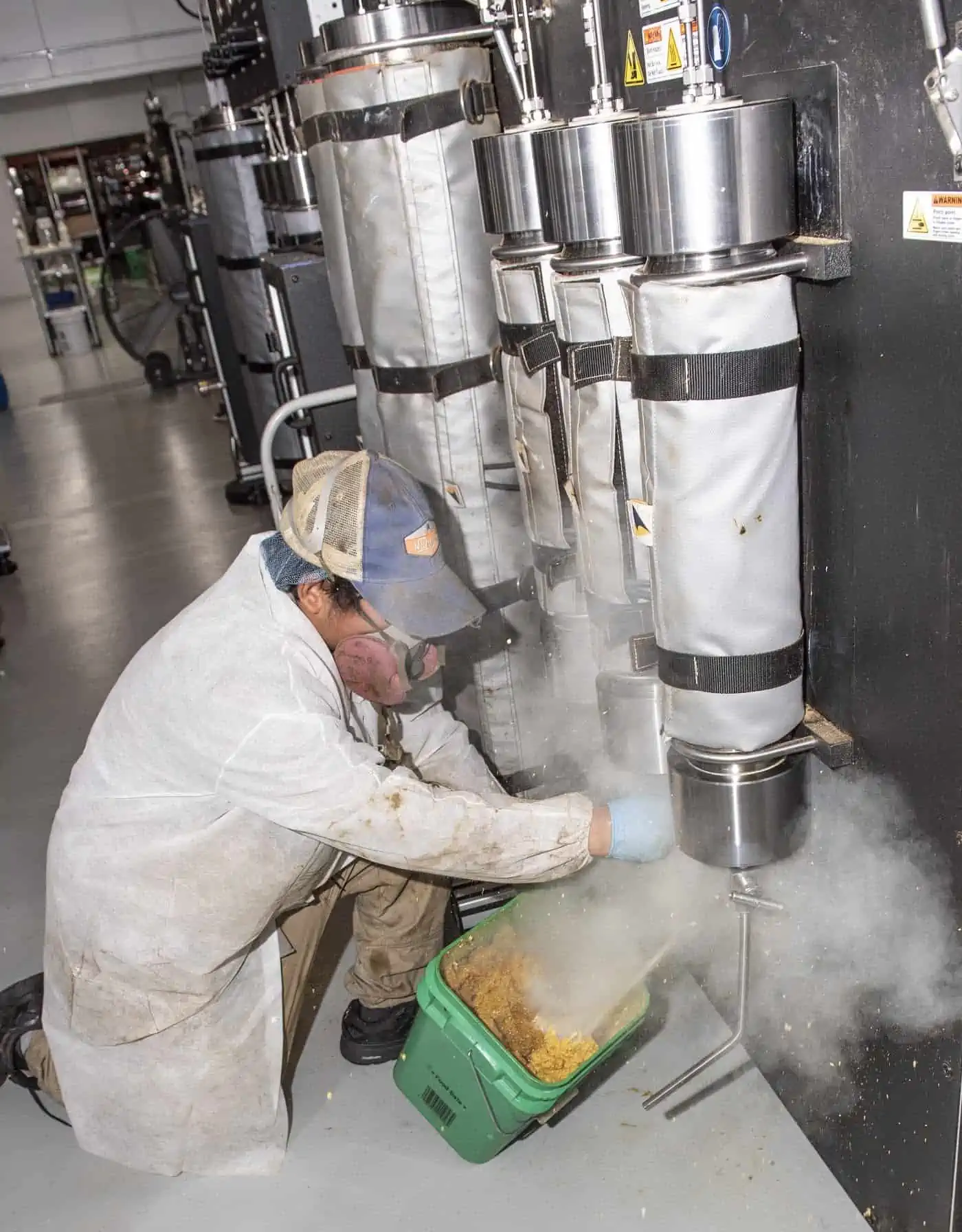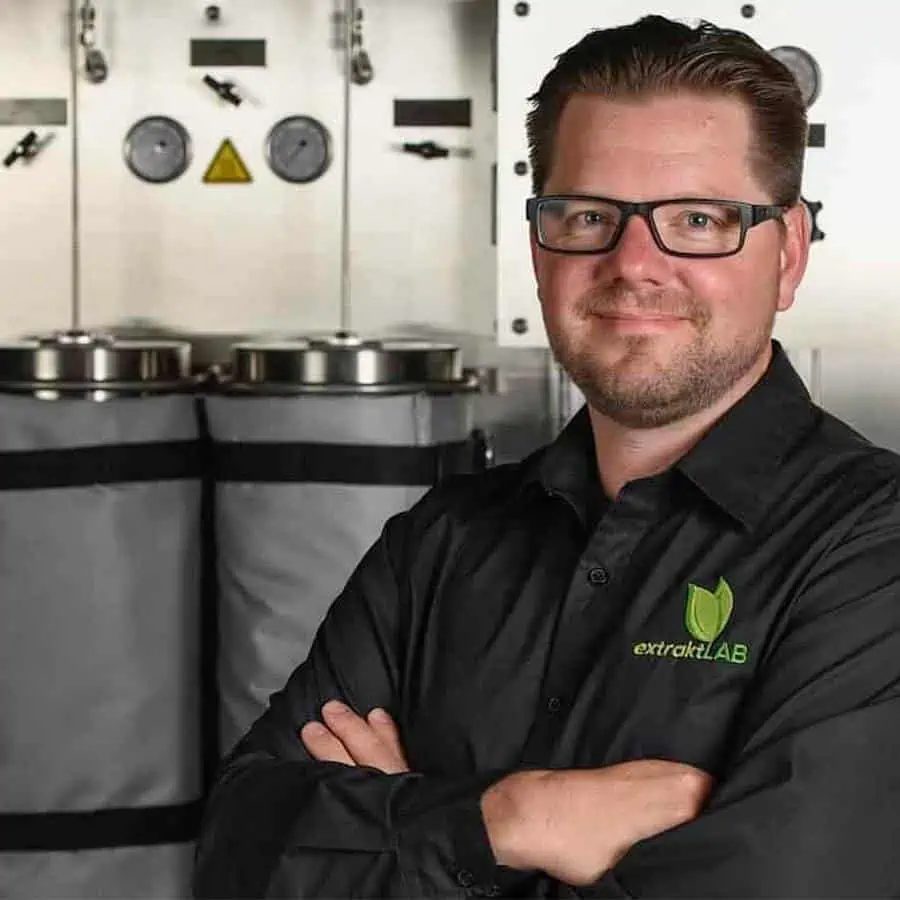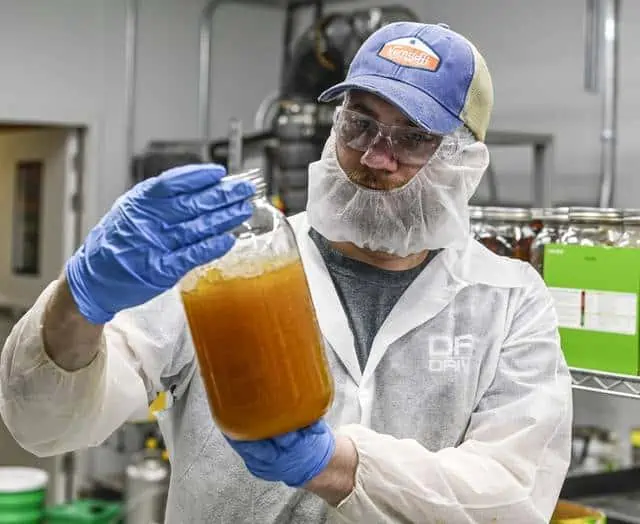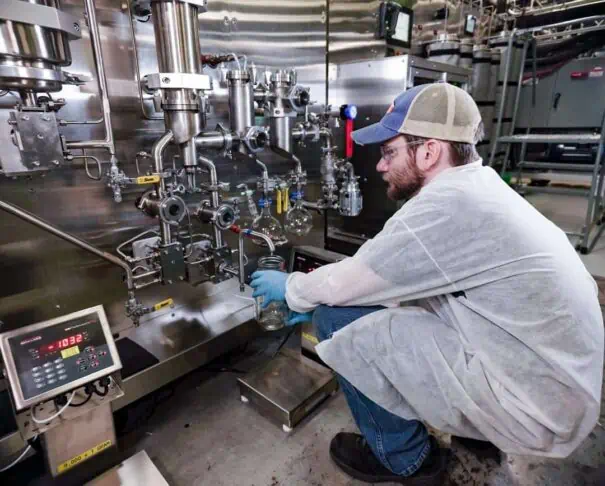A Critical Analysis and Comparison of Ethanol and CO2 Extraction Techniques for CBD Derived from Hemp
Abstract
Ethanol has been used as a solvent to extract essential oils from botanicals for centuries. Recently, ethanol has been used to extract the cannabinoids CBD and CBG from hemp. Ethanol is an attractive solvent because it is readily available in commercial quantities and relatively inexpensive in a denatured state.
There are two main categories of ethanol: denatured or food grade. 200-proof food grade ethanol is pure and contains very little water. Denatured ethanol is typically 196-proof or less and contains added chemicals known to be detrimental to health. Most licensed processors of hemp employing ethanol extraction use denatured ethanol to greatly reduce the cost of operation, but do so without knowing how this impacts the public.
This article compares denatured ethanol vs. CO2 as an extraction solvent. We discuss chemical residue contaminants, testing issues, solvent reuse, and solvent revalidation requirements. We also discuss and compare solvent loss costs for the two extraction techniques and show how solvent losses can contribute to high operating costs. Finally, we present a comprehensive comparison of ethanol and CO2 as extraction solvents.
Chemical Residues in CBD Oil
Consumers demand the highest purity for all ingestible products. Consumers want products to be safe and free of any health harming chemical residues. This is especially true when a remedy is claimed to be derived from a natural botanical source. The dirty little secret in the hemp industry: natural CBD products might not be so healthy.
Residual chemical solvent Impurities from ethanol are entirely avoidable using CO2 production methods.”
Denatured ethanol is chosen by manufacturers instead of food grade ethanol in order to avoid expensive excise taxes. Even though most of the chemical impurities are claimed to be at “safe” levels as described by the United States Pharmacopeia (USP), chemical residuals are still measurable in the CBD oil. These residual chemical contaminants can be harmful to human health. There are more than fifty different denatured ethanol recipes available for hemp extraction, all of them containing solvent health hazards.2

Residue Testing for CBD Oil
In the hemp and botanical industries, third-party lab tests are used to measure and control the quality of wholesale and retail consumer products. Unfortunately, many of these “standard” quality tests are conducted by labs without having first-hand knowledge of the added chemicals in denatured ethanol, these chemicals are labeled “unknowns”.
The quality of the denatured ethanol used in extraction affects the end product. These generic tests only address a portion of the potential denatured ethanol chemical residues. This is why the International Council for Harmonization (ICH) Q2 specification requires unknowns be identified and assessed in order for a test method to be valid.
“Standard” tests can miss chemical contaminants present in the sample, giving a false “chemical residue free” test result. By adjusting and validating a single “standard” test method to address other possible contaminants, the consuming public doesn’t need to be misled or potentially harmed.
Consumers may have a false sense of product safety when consuming ethanol-derived extracts supported by “standard” lab tests. Without scientific training, denatured ethanol extraction manufacturers may even brag their CBD has LESS residue than their competitors.3
Why should a natural product have ANY unnatural chemical residues? It is our belief, backed by growing consumer awareness, manufacturers should be required to disclose low-level chemical contaminants and residuals in their products.
Risk Assessment of Chemical Residues between CO2 and Ethanol
Chemical residues are entirely avoidable using CO2 extraction techniques. CO2 is a pure solvent because it does not use chemical denaturants. There are several different grades of CO2 including industrial, food, and medical grades. Food grade CO2 is pure and inexpensive compared to ethanol. (Specifications areav ailable from the Compressed Gas Association and Certificates of Analysis from all CO2 providers.)
The following table examines the pros and cons of ethanol vs CO2 as a solvent.
Table 1. Risk Assessment comparing chemical residues in extraction methods.
| Denatured Ethanol Extracts | Food-Grade CO2 Extracts | |
|---|---|---|
| Presence of chemical solvent residual contaminants in extract | High Risk. | No risk. |
| Health impact of chemical solvent residuals | Unknown risk. The toxicity and carcinogen aspects of the chemical residues in ethanol are significant and defined by the Environmental Health Criteria 170, World Health Organization, 1994, the US National Toxicity Program. | No risk. |
| Validated test methods for measurement of chemical residuals | High risk of misleading results with standard testing methods of 3rd party labs. The standard list of impurities tested often does not match the impurities in denatured ethanol.
Comprehensive testing methods and procedures are readily available, but must be validated according to USP<467>4, ICH Q25, ICH Q3C6 and EP 5.47 (EHC, IRIS). Testing methods must be developed and validated for each product and each specially denatured ethanol recipe. |
No risk. |
| Batch-to-batch solvent revalidation | To ensure purity, solvents must be retested between each extraction batch to verify no buildup of contanimants.8 | No risk. |
Highly publicized events such as the vaping crisis are quickly raising consumer awareness about the purity and safety of hemp and botanically derived products. The growing consumer preference for CO2 extracted products is expected to quickly accelerate as the FDA defines the health and safety requirements for the industry.
Solvent Loss as a Key Cost Driver in Ethanol Production
Companies choosing ethanol extraction methods often do so because the cost for ethanol equipment is attractive. But, ethanol extraction also carries the highest operating costs for many reasons. Table 2 shows poor ethanol recovery from extracted biomass translates into a significant loss of solvent and added cost.
Table 2. Estimated Difference in Solvent Costb,c for a 1-ton per day Ethanol and CO2 system.
| Ethanol | CO2 | |
|---|---|---|
| Approximate Equipment Costa | $2,000,000 | $4,000,000 |
| Required Solvent Start-Up Cost | $7,000 | $500 |
| Solvent Loss Cost per Day | $2,700-3500d | $115 |
| CUMULATIVE COMPARISON | ||
| 1 Year Solvent Loss Cost | $972,000-1,260,000e | $34,000f |
| 10 Year Solvent Loss Cost | $2,916,000-3,780,000 | $102,000 |
- Biomass throughput is 1 ton per day processing to distillate.
- All costs are approximate and in USD.
- Costs of infrastructure, recovery, biomass disposal, revalidation costs, losses due to carbon, and energy are excluded.
- 5% loss per cycle at 1 gallon of ethanol per pound of biomass. 360 days operating per year. Assumes no carbon or filters are used.
- Cost of one 240-gallon tote including shipping is about $7/l of ethanol.
- Cost of CO2 in bulk delivered is about $0.04/lb.
Solvent Revalidation
By using headspace GC-MS, it can be easily demonstrated, a solvent can only be reused 10-20 times before it needs to be discarded for fresh solvent. This is determined by looking at the residues, denaturants, pesticides, and insecticides extracted from the solvent concentrates.
Since it is inevitable for contaminants to build up with repeated use from batch to batch, solvent reuse carries either: a high cost of testing and remediation or frequent solvent changes with fresh solvent. Either situation has a major impact to the overall cost effectiveness of ethanol as an extraction solvent. Indeed, the only way to eliminate this cost and make ethanol extraction manufacturing profitable, is to forgo testing and prolong the reuse of the extraction solvent while the concentration of contaminants rises.
Other Key Comparisons Between Extraction Methods
Table 2. Ethanol vs CO2 Extraction Comparison
| Parameter | Ethanol Extractor | CO2 Oil Extractor |
|---|---|---|
| Organic products | Organic ethanol required.9 | No special requirements. Already an approved organic solvent.9 |
| Cannabinoid Recovery | 50-80% typical cannabinoid recovery including carbon scrubbing. Method may require carbon to remove chlorophyll. Carbon absorbs THC and CBD, lowering recovery. Carbon is a high cost consumable. | 85-95% typical cannabinoid recovery. No carbon is required due to the lack of chlorophyll extracted. |
| Solvent Recovery | Ethanol is expensive and therefore needs to be recovered. Typically, 90-95% recovery of ethanol leads to high operating costs. Losses come from ethanol remaining in biomass and extract. | CO2 naturally separates from extract as pressure is lowered. No need for any recovery process. CO2 maintains purity and can be recycled for subsequent extraction runs. |
| Disposal of Raffinate (Extracted Biomass) | Biomass extracted with ethanol is hazardous waste and may be flammable due to type of ethanol used and the amount of remaining VOC and HAP.10 Subject to regulations 40 CFR 261.21. Transportation subject to DOT hazardous waste rules. | Biomass extracted is VOC and HAP free and is a decent source of food grade essential amino acids and digestible protein. Recyclable with potential biomass tax credits available in Europe. Transportation is not regulated. |
| Winterization | Warm ethanol extractions need to be winterized. Winterization may be avoided if extraction is at << -20°C leading to high energy expense. | Winterization may be avoided with subcritical extraction. However, extraction is much slower at low pressure. |
| Safety, Infrastructure Cost | Significant fire hazard risk for indoor deployment.11 High cost for hazardous building occupancy and special room classifications and limitations.11,a | Inert. No fire hazard risk.12 Proper installation mitigates static and asphyxiation risks. Minimal requirements. May operate in industrial building (F2) classification. |
| Equipment Cost | $2-3M USD for 1 ton per day | $3-4M USD for 1 ton per day |
| Operating Cost | High variable costs and overhead, including but not limited to: ethanol cost, ethanol losses, consumables, reduced recovery, high insurance premiums, hazardous waste disposal, and energy costs. | Very low variable cost for CO2 No difficulty getting business insurance. No hazardous waste disposal. |
| Scalability | Easily scales to 10 tons per day in less than 450 m2 with hazardous (H2,3) occupancy, with about ~7000 amps, 230V, 3 phase cooling capacity and C1D2 special rooms.13 | Easily scales to 10 tons per day in less than 450 m2 in F occupancy with ~2400 amps 230V 3 phase. |
| Solvent-Sourced Cross Contamination Risk | Herbicide, pesticide, solvent contamination, extraction byproduct contamination and risk.b | CO2 is not generally used across lots. No risk of cross contamination. |
| Solvent Purity Revalidation Costs | Required by GMP. Solvent must not show an increase in contaminants over time.8 High cost for validation testing, potential remediation, filtration and testing for contaminants. | None required. |
| Cost of Solvents | Food grade ethanol is safest and comes with little to no chemical contamination risk, but with higher cost. Specially denatured solvents are less expensive but carry a myriad of non-food grade contaminants.1 | Low price per kg. |
| Terpenes for full spectrum flavor and aroma | Lost during processing. | Captured during processing. |
| Environment | High carbon footprint to produce ethanol. Cooling capacity needed to cool to <20o C. Disposal of hazardous biomass waste after processing | Byproduct of existing industrial processes, nontoxic, nonecotoxic, renewable, and recaptured.14 Considered a green solvent. |
- Limits on the amount and storage of flammable solvents in addition to specific alarm lights and deflagration alarms and detectors, emergency phones and alarm systems with 24-hour third party monitoring, alarm levers every 150 ft, setbacks from property lines or other adjacent occupants, automatic and special sprinkler systems, fire distance offsets, deratings on maximum solvent volume for multi-story, emergency power for vents, fail safe electrical systems, spark proof venting, certified equipment for hazardous locations, and explosion control plans.11,14 There is no limitation on the amount of CO2 a factory can have on site, so the mentioned infrastructure is not required.9
- Ethanol derived chemical contaminants remaining in the extracted oil after removal of the ethanol, may increase the risk of safety and health for the consumer.16 For example, residual contaminants listed in various ethanol recipes have a higher boiling point compared to ethanol and are therefore not removed from the oil during distillation. Furthermore, solvent analysis for contaminants are not always included in a typical certificate of analysis.
In a subsequent article, we will explore and estimate the magnitude of these additional hidden costs.
Conclusion
Health dangers of such additives are well documented (but only partially understood) in the context of cross factors including age, health, drug interactions, effects on the brain, effects on cognitive and emotional function, and susceptibility to negative health consequences. Solvents such as methanol, hexane and heptane are given a “pass” based on extrapolations of rat studies by the same agencies scrutinizing CBD as a drug. It is our opinion that all unnatural contaminants should be listed as ingredients– even when they are evident at so-called “safe” levels.
Marginally higher capital cost is no excuse for the risk of compromising public health. CO2 derived hemp and CBD oils are widely regarded as the highest quality and chemical residue free oils produced. Tables 2 & 3 show CO2 extraction has advantages over ethanol as the extraction media in every compared factor, except capital equipment cost. Drastically lower operating costs are a key benefit of CO2 extraction. Over time, lower operating costs accumulate and will continue to build value throughout the life of the equipment.
Disclaimer
References
- (1)
eCFR — Code of Federal Regulations- TTB Alcohol and Rules for Specially Denatured Alcohol https://www.ecfr.gov/cgi-bin/textidx?c=ecfr&sid=fc3be5d2e97afdd4aed5fb7b5c26309c&rgn=div5&view=text&node=27:1.0.1.1.17 &idno=27#se27.1.21_1112 (accessed Dec 8, 2019).
- (2)
Ahuja, S. Overview: Isolation and Characterization of Impurities; Elsevier Inc., 2004; Vol. 5. https://doi.org/10.1016/S0149-6395(03)80003-X.
- (3)
Executive Profile: Stephen Mueller, Founder and CEO of Mile High Labs https://mgretailer.com/business/stephen-mueller-founder-ceo-mile-high-labs/ (accessed Jan 3,2020).
- (4)
USP 467 Residual Solvents; 2007.
- (5)
ICH Q2(R1) Validation of Analytical Procedures: Text and Methodology – ECA Academy https://www.gmp-compliance.org/guidelines/gmp-guideline/ich-q2r1-validation-of-analyticalprocedures-text-and-methodology (accessed Dec 30, 2019).
- (6)
Medicines Agency, E. ICH Guideline Q3C (R6) on Impurities: Guideline for Residual Solvents Step 5.
- (7)
LIMITING RESIDUAL SOLVENT LEVELS IN ACTIVE SUBSTANCES, EXCIPIENTS AND MEDICINAL PRODUCTS The International Conference on Harmonisation of Technical Requirements for Registration of Pharmaceuticals for Human Use (ICH) Has Adopted Impurities Guidelines for Residual. 5.
- (8)
CVM. Guidance for Industry Drug Substance Chemistry, Manufacturing, and Controls Information; 2010.
- (9)
Guidance & Instructions for Accredited Certifying Agents & Certified Operations | Agricultural Marketing Service https://www.ams.usda.gov/rules-regulations/organic/handbook (accessed Dec 8, 2019).
- (10)
Hazardous Waste from Cannabis Extraction – Extraction Magazine https://extractionmagazine.com/2019/08/14/hazardous-waste-from-cannabis-extraction/ (accessed Dec 15, 2019).
- (11)
Chapter 3: Use and Occupancy Classification, Building Code 2015 of Utah | UpCodes https://up.codes/viewer/utah/ibc-2015/chapter/3/use-and-occupancy-classification#3 (accessed Dec 8, 2019).
- (12)
CGA P-1-2015 – Standard for Safe Handling of Compressed Gases in Containers – 12th Edition https://webstore.ansi.org/standards/cga/cga2015-1531002?gclid=CjwKCAiA27LvBRB0EiwAPc8XWflJxH6MAC74YxV5upUoi5lt6OakcaPK5L_mu7CrSSu5CMXTjcG9mxoCrikQAvD_BwE (accessed Dec 8, 2019).
- (13)
2006 International Building Code https://www.optasoft.com/applications/codes/2006IBC/HTMLHelp/414.htm (accessed Dec 8,2019).
- (14)
Chapter 9: Fire Protection Systems, Building Code 2015 of Utah | UpCodes https://up.codes/viewer/utah/ibc-2015/chapter/9/fire-protection-systems#903 (accessed Dec 8,2019).
About extraktLAB
extraktLAB manufactures leading-edge, CBD hemp and botanical processing equipment in a ASME accredited, ISO 9001:2015 certified, 30,000 ft2 facility in St Croix Falls, WI. extraktLAB also operates its Institute for the Advancement of Bioprocessing and Formulations in a fully operational, GMP Certified, USDA Certified Organic hemp processing facility occupying an 80,000 ft2. Demonstrations and tours are held weekly. The facility is located in Osceola, WI.
extraktLAB’s equipment is known for having the highest throughput, smallest footprint, lowest energy consumption and most scalable CO2 extraction process in the industry. In fact, customers can scale to process 10 tons of hemp extracted per day in an extremely small area using only a small amount of power. Conversely, it is important for botanical extraction businesses to keep their operation sized for smaller botanical extraction applications. We fully service both industries and small business clients.




